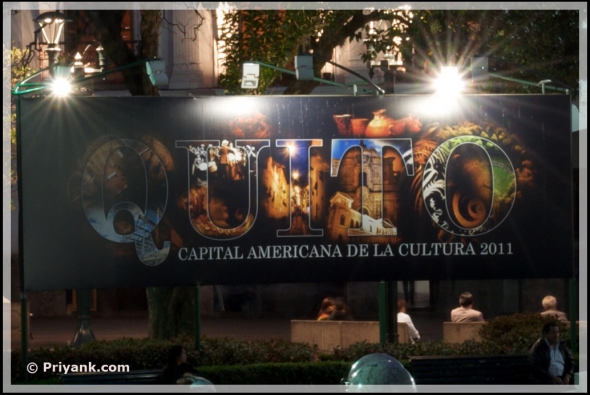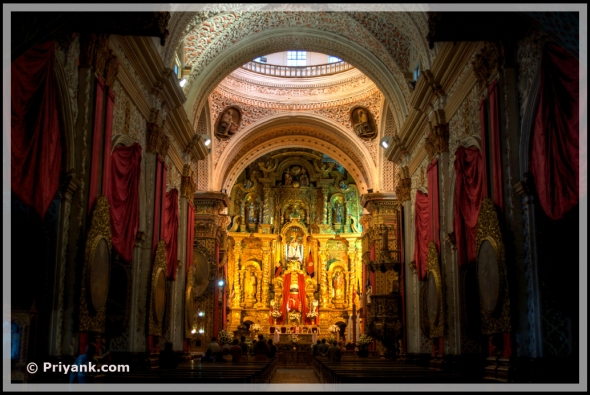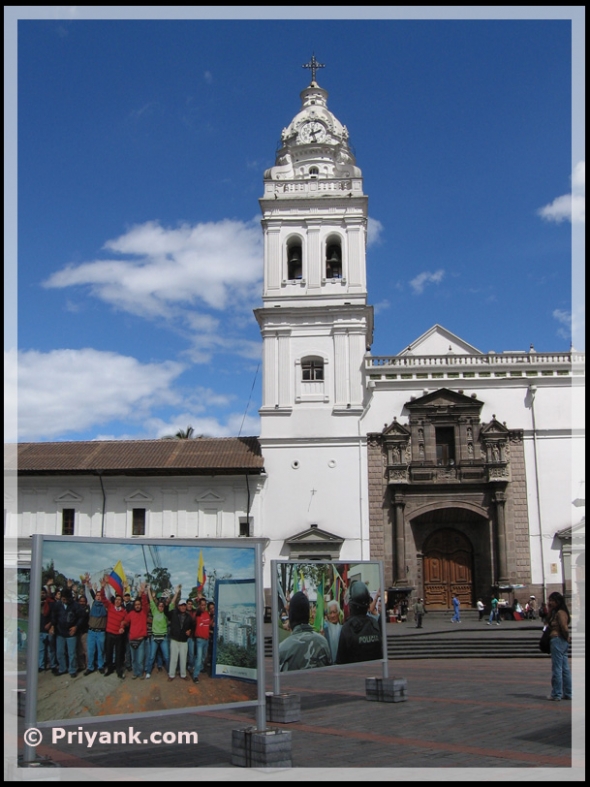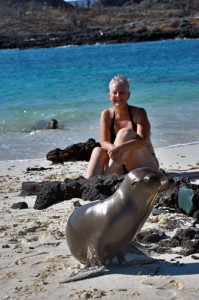 This article is written by Priyank Thatte. Priyank is a noted travel blogger and his blog features in a list of India’s best bloggers. He is currently employed at the Ministry of Community and Social Services, Government of Ontario. He is based in Ontario, Canada. He is one of our guest contributors.
This article is written by Priyank Thatte. Priyank is a noted travel blogger and his blog features in a list of India’s best bloggers. He is currently employed at the Ministry of Community and Social Services, Government of Ontario. He is based in Ontario, Canada. He is one of our guest contributors.
Over the course of urbanisation and economic development, cities get transformed and often lose their historic flavour. Few cities in the world have been able to actively preserve and restore their cities back to the historic and architectural splendour from centuries ago that the places were known for. Quito, the capital of Ecuador, is one of such cities and has the honour of being awarded a status of “world heritage” city back in 1978, the first time that any city had earned this acclaim.
Sign in Quito’s Grand plaza: “Cultural capital of America, 2011
I am extremely curious about historical sites, architecture and recognitions such as these. So, armed with a list of criteria that UNESCO uses to select heritage sites, I began my in a UNESCO way.
World Heritage city: Criteria for selection lays down 10 criteria for selecting a UNESCO site. 6 of these criteria relate to cultural capital.
1. “represents a masterpiece of human creative genius”
2. “exhibits an important interchange of human values, over a span of time, or within a cultural area of the world, on developments in architecture or technology, monumental arts, town-planning, or landscape design”
3. “bears a unique or exceptional testimony to a cultural tradition or to a civilization which is living or which has disappeared”
4. “is an outstanding example of a type of building, architectural, or technological ensemble or landscape which illustrates a significant stage in human history”
5. “is an outstanding example of a traditional human settlement, land-use, or sea-use which is representative of a culture, or human interaction with the environment especially when it has become vulnerable under the impact of irreversible change”
6. “is directly or tangibly associated with events or living traditions, with ideas, or with beliefs, with artistic and literary works of outstanding universal significance”
Quito’s historic centre, the “Old Quito”
“Quito, the capital of Ecuador, was founded in the 16th century on the ruins of an Inca city and stands at an altitude of 2, 850 m. Despite the 1917 earthquake, the city has the best-preserved, least altered historic centre in Latin America. The monasteries of San Francisco and Santo Domingo, and the Church and Jesuit College of La Compañía, with their rich interiors, are pure examples of the ‘Baroque school of Quito’, which is a fusion of Spanish, Italian, Moorish, Flemish and indigenous art.” – Quito, on UNESCO.
1. Monastery of Santo Domingo
The Santo Domingo church was built in the first half of 17th century. The building occupies the eastern side of large Plaza Santo Domingo around which Quito’s public transportation system (Trole bus) winds.
2. Monastery of San Francisco
Iglesia y Monasterio de San Francisco, colloquially known as El San Francisco was built in 1604. When I was here last month, the facade was being repaired and the building was closed for visits except for a mass at 17:00. I snuck in as people were assembling, just before the ceremony began, and took some pictures.
3. Church and Jesuit College of La Compañía
La Iglesia de la Compañia de Jesús, known colloquially as La Compañia is a Jesuit church in the historic center of Quito, Ecuador. It is one of the best-known churches in Quito because of its interior plaster and wood carvings. The large central nave, which is lavishly decorated with gold leaf, is supposedly one of the best in world. It costs $2 to enter this church and you are not permitted to photograph inside. hmph!
Quito School of Architecture: Fusion of European and Native American concepts
Under the influence of the Spanish rule and the Catholic religion between 1542 and 1824, the Quito school of architecture established its identity as an artform with a combination and adaptation of European and Indigenous (local people of south america) features.
The technique of “Encarnado” (simulation of the colour of human flesh) is the main characteristic of the school. Due to this, I thought that the work looked quite life-like, in comparison to its sister European art in which human bodies were mostly pale and monotonous. In addition, characters depicting stories from the Bible are dark skinned locals, and you can clearly see the inclusion of ancestral indigenous “pagan” customs and iconography such as the use of animals and natural forces.
Church and Plaza Santo Domingo.
So, these were some of the principal world heritage sights in Quito and I took a lot of time checking these out. But it was only the tip of an iceberg, there was an entire UNESCO city to discover.
Which UNESCO cities have you visited and what was your experience?
Priyank Thatte
8 Oct 2011
Author bio: Priyank is a world traveller and a travel blogger who was recently backpacking in Ecuador, South America. Checkout his travel blog, join his facebook page and follow him on twitter.





